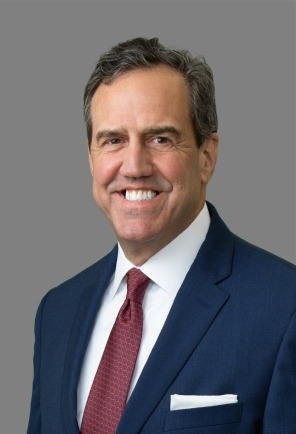The Global Commercial Reset: An Evolution or a Revolution?
As the physicist Niels Bohr said, “Predictions are difficult – especially about the future.” Around the world, executives’ best-laid plans have been wiped out by the COVID-19 pandemic. Management teams are staring at blank whiteboards, scrambling to develop strategies for a very different economic environment.
The tightrope is especially perilous for commercial leaders, who must work to shore up the business in the short term while gauging how their organisation can continue to deliver long-term growth. In this edition of From the Inside Out, we will assess frameworks and strategies that sales and marketing leaders can use to kickstart commercial transformations and retain value through the present crisis.
Kate Donaldson, Managing Director at Alvarez & Marsal (A&M), says, “It is not enough for a company to ask, ‘What is going to happen to us?’. The solution is detailed scenario planning that directly addresses the changing needs and demands of your customer base. Short-term and long-term plans must cascade sequentially: a 3-6-month plan should be accompanied by a 6-12-month plan and a longer-term 12-18-month plan.”
Sales Transformations: Starting and Ending with the Customer
Instead of revolving around arbitrary numbers and revenue projections, plans should take account of best-case and worst-case scenarios across categories and channels, adjusting for different demand levels. This prevents short-term strategies from impeding long-term progress. It makes little sense to remove a sales team for the sake of a quarterly earnings report if those salespeople will be vital over the next 12 to 18 months.
Ms. Donaldson’s take on the importance of scenario planning is shared by A&M Managing Director Ash Mathradas. For Mr. Mathradas, “Short-, medium- and long-term planning around key targets are essential if sales leaders are going to be able to respond decisively in what is a fundamentally pretty volatile environment.”
Making important strategic decisions in an uncertain environment is never easy. While Bohr tells us that forecasting is inevitably an inexact science, sales performance can be made more predictable by focusing on customer health. Ms. Donaldson proposes performing due diligence on the health of key trade customers: “The health of a business is the health of its major customers. It is important to understand how far each customer might be damaged in this environment, and this knowledge should inform commercial resource allocation decisions moving forward.”
“Post COVID-19, most sales transformations are aimed at either improving sales productivity or reducing go-to-market costs,” says Mr. Mathradas. “Mandating a 5-10 percent cost reduction target by department isn’t sustainable, costs will quickly find their way back into the P&L. Cutting across the board is not a sensible strategy: invariably, some areas should be marked for significant cuts and others should be left alone. Anything beyond 10 percent probably isn’t achievable in the first place under this structure, never mind sustainable.”
Looking at profit and loss (P&L) costs differently may create more sustainable results. “I like to look at all sales costs by ‘customer P&L’”, says Mr. Mathradas. “Customer P&L’s quickly help you identify unprofitable and highly profitable customer segments and then deliver quick improvements such as minimising exposure to customers with no path to profitability. Additionally, sales influences other support costs like marketing, channel investments, discounting, HR, IT/digital, real estate and more. When departments can work cross-functionally and retain a focus on the customer, sustainable savings of 15 percent become very achievable.”
To Mr. Mathradas, preparing for re-investment is as important as the initial cost reductions. “Once the cost take-out phase is complete, the job becomes about identifying key growth areas. Industries like aviation and retail will cut back procurement to what is needed to keep the lights on. As these sectors gasp for air over the next few years, suppliers may need to reduce their reliance on discretionary purchasing decisions and retool around the fundamental building blocks of the new economy, e.g. productivity software, e-commerce, or healthcare.”
Sales and the Operating Model: A Revolutionary Shift?
Boards are still seeking to understand the degree of transformation required in different businesses and sectors, but some companies are already confronting and starting to implement operating model redesigns. Will the commercial function undergo a profound realignment, or will changes be less drastic?
To Mr. Mathradas, operating model changes will necessarily involve the sales function, and some repositioning is inevitable. “Remote technologies like Zoom are here to stay. This will definitely have long-term repercussions for customer relationships, and sales will be affected – although this might not happen as quickly as some people expect.”
“We are also seeing a switch in many industries to a subscription mindset in sales. Instead of one big multiyear contract, commercial teams are investing in a ‘land and expand’ model that delivers a more cyclical and symbiotic relationship between buyer and seller. This necessitates a switch in the marketing mindset from grabbing attention to educating customers. All these changes taking place at the same time add up to a really significant shift.”
Ms. Donaldson believes that sales functions will not face a significant upheaval in terms of their position within the broader operating model. “Strategic operational changes are more likely to take place within commercial teams. Customers and sales managers are no longer travelling. In this environment, how do technical sales get done? That is going to be seriously tough, and new customer touchpoints will lead to restructuring within commercial functions. We might see a more local or regional sales force rather than international or global salespeople crossing continents, for instance.”
In this uncertain period, much depends on the degree to which companies focus on their customers. The way the world sells has changed, perhaps irrevocably. As operating models evolve in response to the COVID-19 crisis, the way sales interacts with other arms of the organisation and with customers will inevitably change. The companies that maintain a strong focus on the customer above all else will be best placed to survive.
Click here for a PDF of the newsletter >
Stay informed about the key issues driving companies to seek meaningful, lasting change in From the Inside Out, our corporate transformation newsletter.


